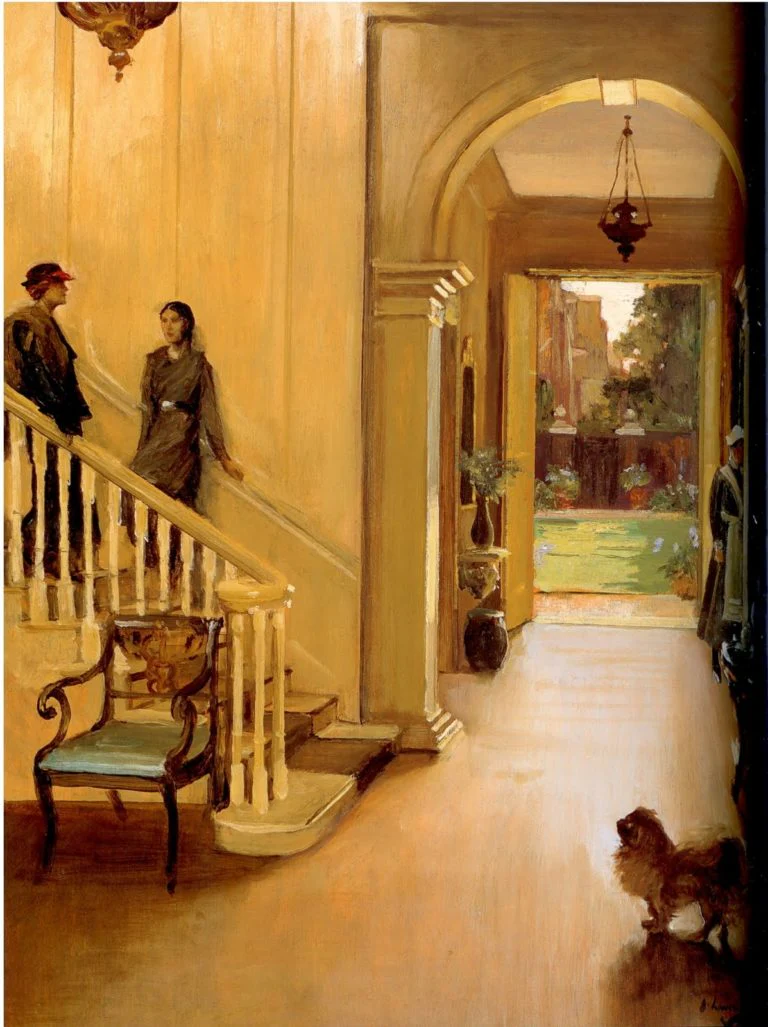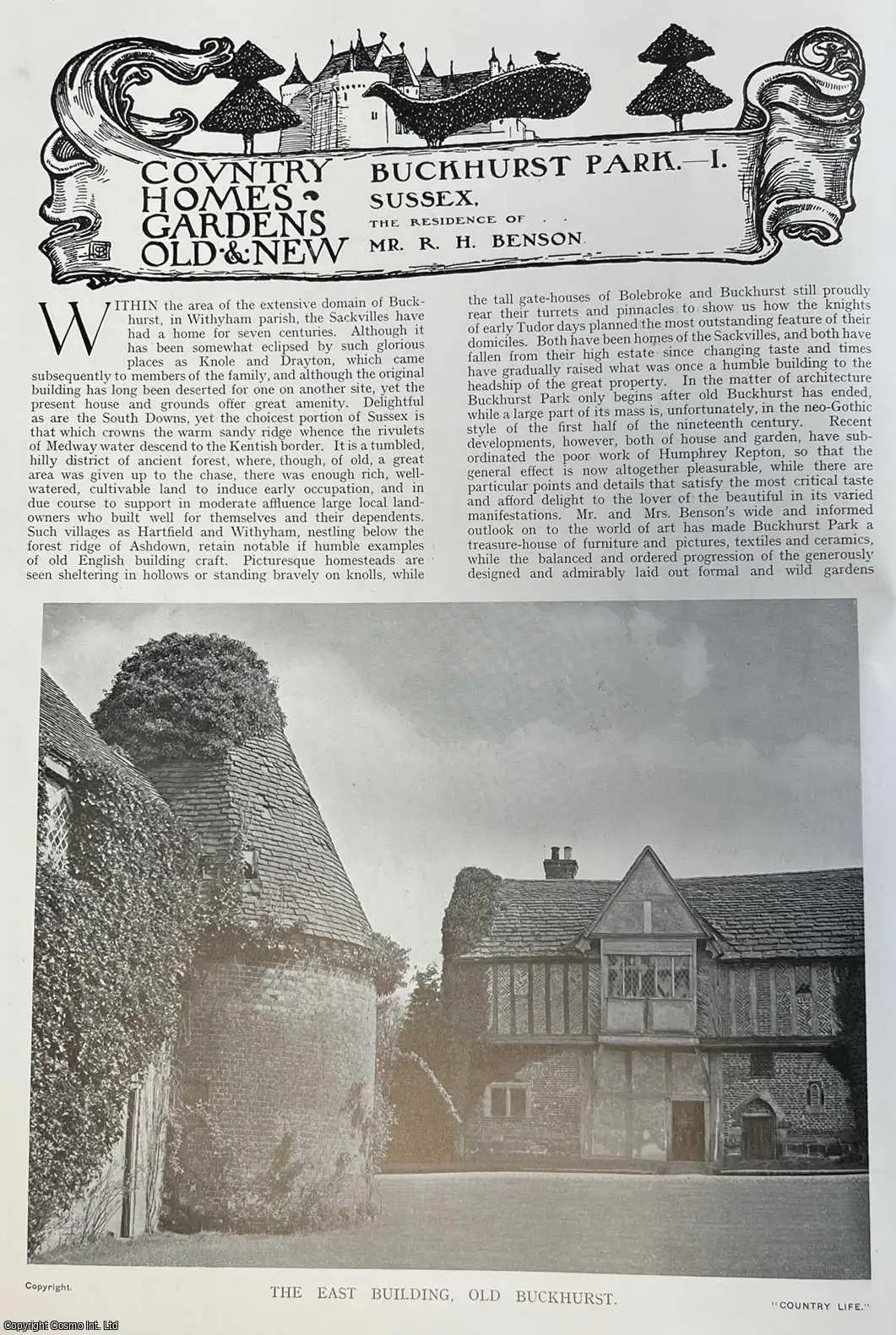Sibyl Colefax - Muses & the Beau Monde
- Lilium

- Jul 16
- 3 min read

Sibyl Sophie Julia, Lady Colefax, born 1874, was an English interior decorator and socialite in the first half of the twentieth century.

Colefax was born at Wimbledon, third but only surviving daughter (and fifth and last child) of William Stirling Halsey, of the Indian Civil Service, and Sophie Victoria, daughter of the businessman and politician James Wilson. Her mother's sister, Emily, married the eminent constitutionalist Walter Bagehot. She lived in Cawnpore, India, until the age of 20 when she went on the Grand Tour.
In 1901, she married patent lawyer Sir Arthur Colefax, who was briefly the MP for Manchester South West in 1910. They set up home at Argyll House, King's Road, Chelsea and at Old Buckhurst in Sussex. Widely admired for her taste, after she had lost most of her fortune in the Wall Street crash she began to decorate professionally, using her formidable address book for contacts. Argyll House became where the leading artists and actors of the day rubbed shoulders with politicians and aristocrats and it was where Sibyl forged lifelong friendships. Interior designer, Syrie Maugham, was the next-door neighbour. Just three years later, however, Sir Arthur died. Sibyl had to sell Argyll House and its contents and moved to a much smaller house in Lord North Street, Westminster.

She was able to purchase the decorating division of the antique dealers Stair and Andrew of Bruton Street, Mayfair and established Sibyl Colefax Ltd in partnership with Peggy Ward, the Countess Munster. On her 'retirement' (following a family tragedy) Peggy Ward advised her to take on John Fowler as her partner, which she did in April 1938.
Colefax was well-connected and also ahead of her time: her circle of friends and acquaintances provided her with clients and she became a very successful businesswoman. British diplomat Harold Nicolson wrote in his diary: ‘Lunch with Sibyl Colefax at Boulestin. She tells me that she has made £2,000 last year by her own efforts. She gets up by candle-light and fusses till midnight. A brave woman’. Sibyl’s talent for creating comfortable interiors that were stylish but never pretentious was the secret of her appeal to her influential clients. She was friendly with royalty, including the Duke of Windsor and Wallis Simpson, with entertainers such as Charlie Chaplin and Cole Porter, members of the Bright Young Things including Cecil Beaton, Rex Whistler, Oliver Messel and Evelyn Waugh and with much of the British aristocracy.
The advent of war cut short this partnership. During the Second World War, she organised a soup kitchen and continued to entertain. She often held small lunch parties at The Dorchester known as 'Ordinaries' after which the guest would receive a small bill. She had an affair with the English writer Virginia Woolf, and corresponded with Woolf's husband upon Woolf's death in 1941.

In 1944, the business, managed by John Fowler, took a lease on 39 Brook Street, Mayfair, which has become well known for the Yellow Room. The firm remained there until December 2016.
Although she designed for the elite, Colefax’s views accorded with those of Fowler’s, that ‘a room must be essentially comfortable, not only to the body but to the eye… well behaved but free from too many rules… mannered yet casual and unselfconscious’.
In 1944 Sibyl Colefax sold the business to Nancy Tree (Nancy Lancaster as she became in 1948) for a sum in the order of £10000. She renamed the business Sibyl Colefax and John Fowler Ltd, the name continuing today as the decorating division of the Colefax Group Plc.
Sibyl Colefax died at her home in Lord North Street, Westminster on 22 September 1950. Harold Nicolson penned an affectionate tribute that appeared shortly after in The Listener. She was the inspiration, according to the art historian John Richardson, for the designer Mrs. Beaver in Evelyn Waugh's A Handful of Dust, and for Mrs. Aldwinkle in Aldous Huxley's Those Barren Leaves. In the 1940s she was referred to frequently by the diarist and socialite politician Henry "Chips" Channon, who describes her as "charming, gentle and sad".
















Comments